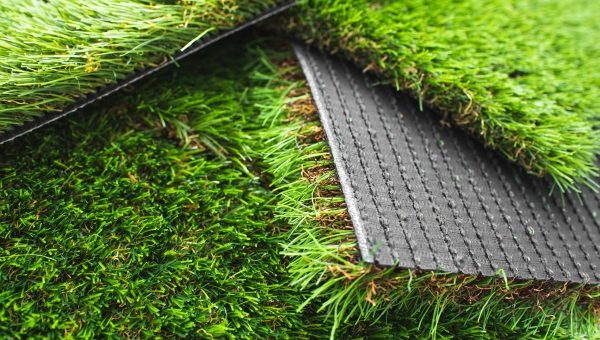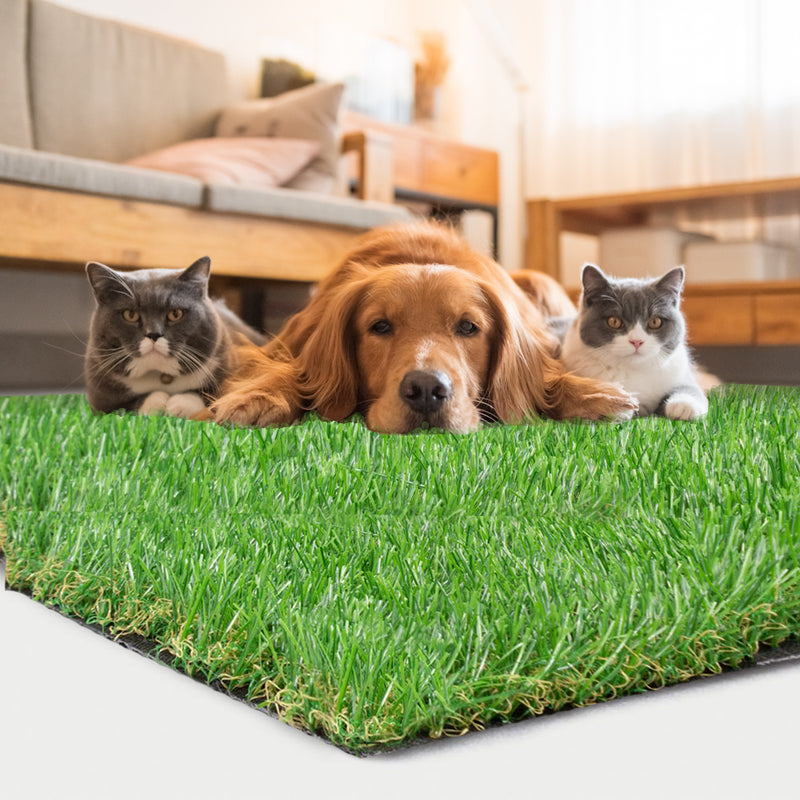Look Into the Environmental Conveniences of Opting for Synthetic Grass Solutions
The adoption of fabricated grass services offers a compelling chance to resolve pressing ecological challenges. By substantially minimizing water usage and decreasing the application of harmful chemicals, these options not only advertise lasting landscaping but likewise shield local environments.
Water Conservation Benefits
One of the most significant advantages of artificial lawn is its capacity to preserve water. In contrast, fabricated grass does not need watering, considerably minimizing the overall need for water sources.
By removing the requirement for regular watering, synthetic grass adds to sustainable landscape techniques and assists alleviate the environmental effect of excessive water intake. Moreover, the preservation of water includes the reduction of overflow, which can result in soil disintegration and river pollution.
Additionally, the setup of synthetic grass permits house owners and districts to allocate water resources more efficiently, focusing on important uses such as drinking water and agriculture. The shift towards fabricated turf not just promotes accountable water use however also straightens with wider ecological goals focused on protecting natural deposits.
As areas increasingly focus on sustainability, the water preservation advantages of synthetic turf present a compelling situation for its fostering in property and industrial landscaping tasks.
Decreased Chemical Usage
The transition to synthetic grass considerably lowers the dependence on chemical treatments commonly utilized in natural turf maintenance. Conventional turf monitoring commonly entails the application of chemicals, herbicides, and plant foods to advertise development and control insects. These chemicals can present risks to human wellness, local wild animals, and the atmosphere, adding to dirt and water contamination.
In contrast, synthetic grass eliminates the demand for these dangerous substances. As soon as installed, it needs marginal upkeep, mainly including regular cleaning and irregular infill replenishment. This decrease in chemical use not only profits the instant environment but also adds to more comprehensive environmental stability. By reducing the launch of synthetic substances right into the environment, synthetic grass advertises healthier dirt and water systems.
Moreover, the absence of chemical runoff connected with man-made grass installments aids protect local waterways from pollution, supporting water life and maintaining biodiversity. Turf installation phoenix az. As communities increasingly prioritize sustainable practices, going with artificial turf presents a sensible solution that straightens with ecological preservation objectives. With this shift, residential or commercial property owners can delight in rich environment-friendly spaces without compromising eco-friendly health and wellness, leading the way for a more lasting future
Lower Carbon Impact

Furthermore, the installment of synthetic grass can result in considerable water preservation. Natural yards require substantial amounts of water for watering, which not only contributes to the carbon footprint related to water extraction and treatment yet additionally stress local water sources. In contrast, synthetic grass needs marginal maintenance, requiring no watering, consequently dramatically minimizing water use and its associated energy prices.
Furthermore, the durability of synthetic grass adds to its lower carbon effect. With a life-span of up to 15 years or even more, the requirement for constant substitutes is lessened, resulting in less waste and lower energy intake in production and taking care of conventional turf alternatives. Overall, artificial grass presents a lasting choice for ecologically conscious landscaping.
Environment Preservation
Environment preservation is an essential factor to consider in the debate over landscape design selections, especially when contrasting synthetic grass to all-natural turf. Natural yard yards often call for substantial upkeep, including the usage of plant foods, herbicides, and chemicals, which can adversely affect regional ecosystems. These chemicals can leach right into the soil and waterways, harming indigenous plants and fauna and interfering with regional environments.
Fabricated lawn removes the need for dangerous chemicals, thereby securing neighboring wildlife and maintaining the honesty of surrounding communities. The setup image source of fabricated grass can lead to the conversion of former lawn areas right into more biodiverse landscapes, such as pollinator gardens or native plant locations, which can support local wild animals.
Inevitably, the transition to synthetic grass not just preserves water and reduces upkeep initiatives but additionally cultivates a more unified partnership in between human tasks and the natural setting, promoting habitat preservation in the next page procedure.
Long-Term Sustainability
Lasting sustainability is a crucial aspect in examining the advantages of synthetic grass over standard grass lawns. One of one of the most considerable benefits of synthetic grass is its toughness; it can last up to 15-20 years with marginal upkeep, whereas all-natural lawn needs frequent reseeding and replacement. This durability minimizes the need for consistent resources, such as water, fertilizers, and chemicals, which are important for preserving a healthy and balanced grass lawn.
In addition, synthetic grass adds to a decrease in carbon discharges connected with yard treatment equipment. Typical yards frequently need gas-powered lawn mowers, trimmers, and blowers, all of which add to air pollution. Arizona artificial turf. In contrast, man-made lawn eliminates the requirement for such devices, advertising a cleaner environment
Additionally, the manufacturing of man-made lawn increasingly uses recycled materials, improving its sustainability account. As producers take on green practices, the ecological footprint of synthetic grass remains to decrease.
Final Thought
The fostering of synthetic grass remedies provides significant ecological advantages, consisting of substantial water conservation, decreased reliance on unsafe chemicals, and a reduced carbon impact. Man-made lawn help in preserving all-natural environments by minimizing land disruption and promoting long-lasting sustainability via the usage of durable products. Jointly, these variables emphasize the possibility of synthetic grass to add favorably to ecological wellness and supply a knockout post a practical option to conventional landscaping practices in a significantly resource-conscious globe.
In comparison, artificial turf does not need watering, considerably lowering the total demand for water resources. By lessening the release of synthetic substances into the ecosystem, fabricated turf advertises much healthier dirt and water systems.
In addition, the installation of fabricated lawn can result in considerable water preservation. In comparison, synthetic turf requires marginal upkeep, requiring no watering, therefore significantly lowering water use and its connected energy prices.
